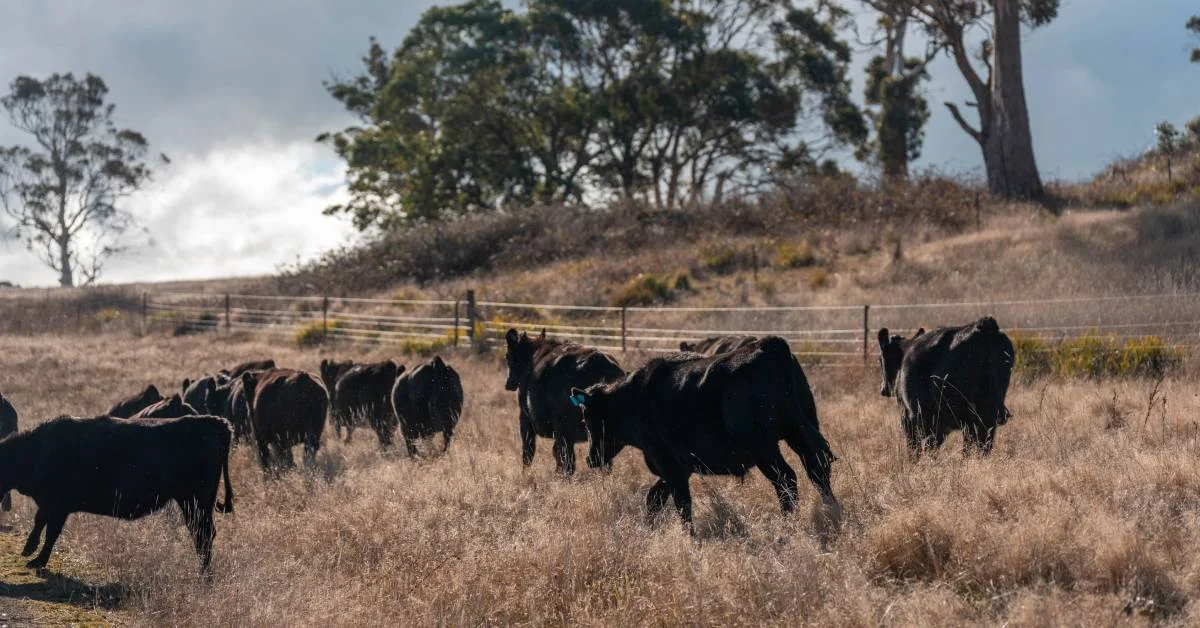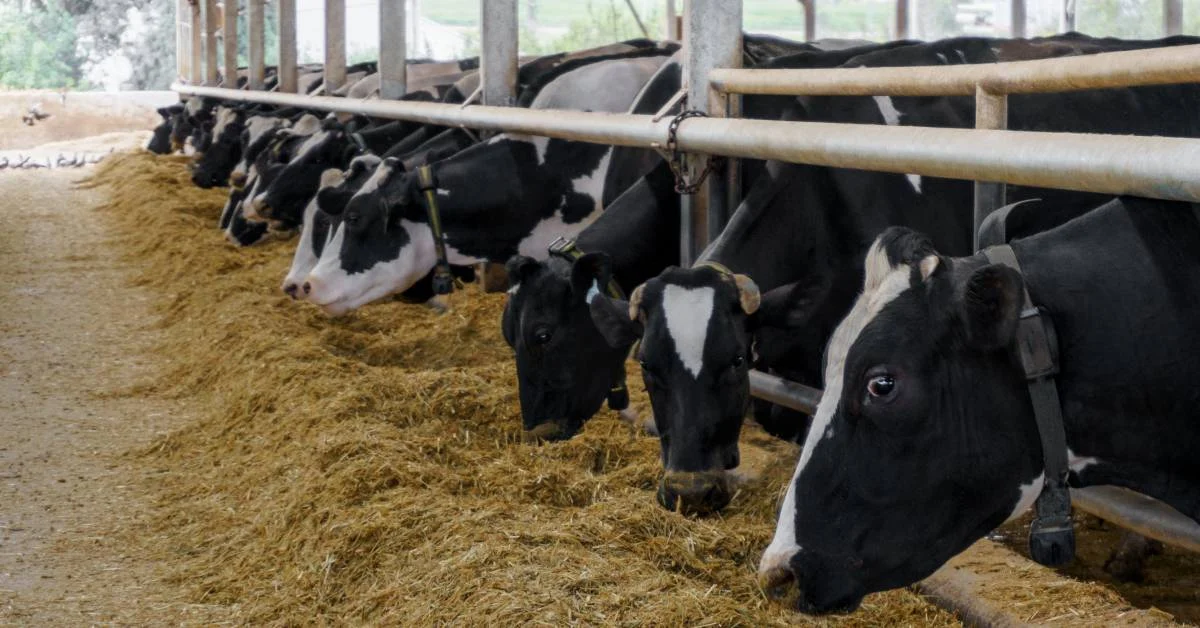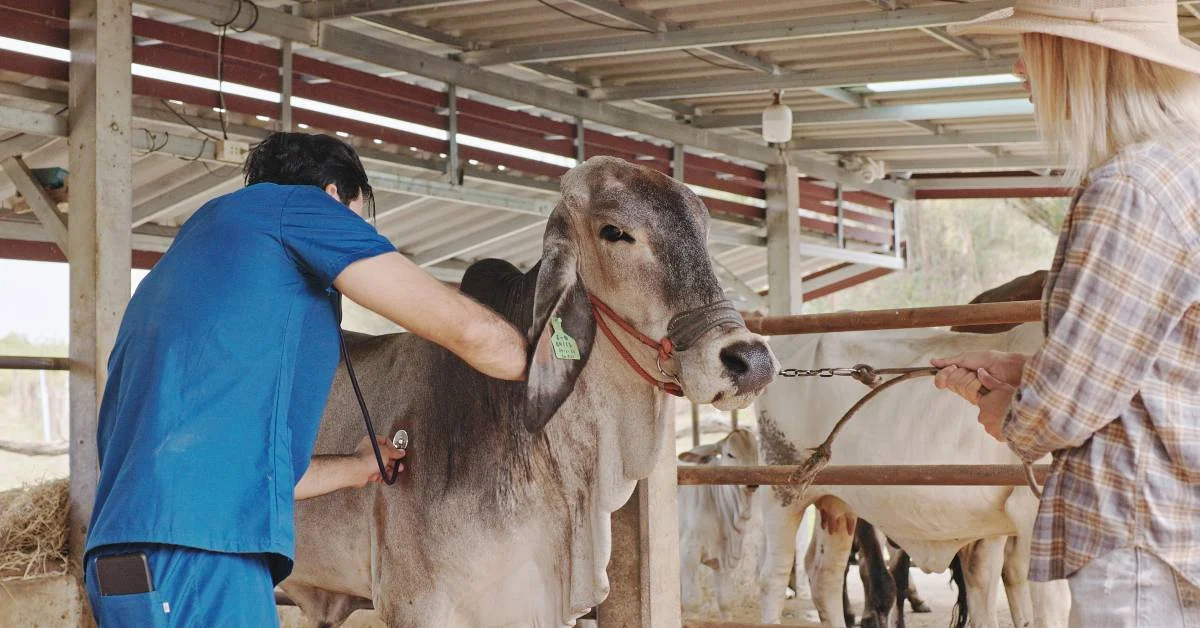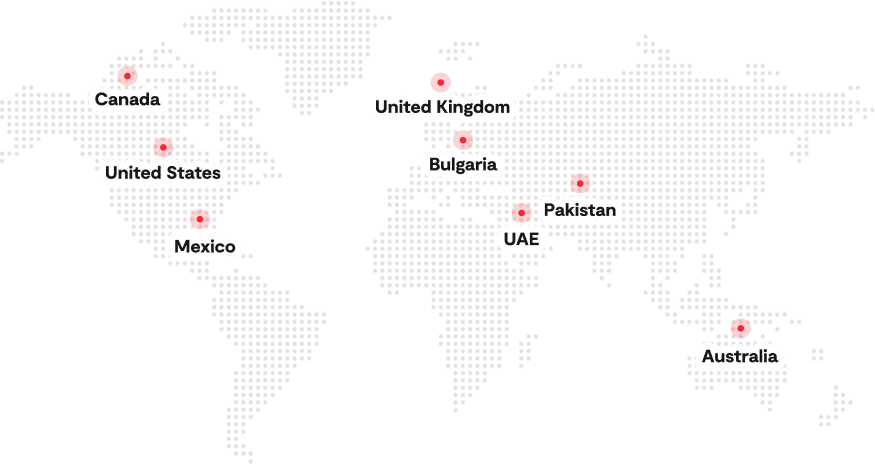Choosing the right seed isn’t just another item on your to‑do list; it’s one of the most consequential decisions you make each season. Your seed choice influences every acre you farm, determining whether you maximize yield and profits or watch your margins shrink.
In an era of volatile weather, rising input costs, and intense market competition, seed selection, predominantly when guided by soil data and agronomy, is the difference between resilience and decline. This article equips you with a user‑friendly framework for modern seed search, explaining what seed traits matter most and how to match genetics to your fields. You’ll learn how to evaluate soil, climate, and pest pressures, diversify maturity groups, and use digital tools.
Whether you’re a row‑crop grower, agronomist, farm manager, or AgTech adopter in the U.S., this guide will help you make seed selection in agriculture more strategic and profitable.
What “Right Seed” Means Today
The “right seed” is no longer a one‑size‑fits‑all choice. Modern genetics offers a spectrum of traits—drought tolerance, disease resistance, herbicide tolerance, and yield stability that must be matched to your specific field conditions. Selecting the right seed means aligning plant genetics with your soil type, climate, pest pressure, and management goals. It also involves considering seed treatments, trait packages, and return on investment (ROI). In short, the right seed is the variety or hybrid that maximizes yield and profitability across your unique environment.
Know Your Fields
Start by understanding the conditions you’re planting into. Soil testing and field evaluations provide crucial insights into nutrient levels, pH, organic matter, and soil texture. According to the USDA, farmers who adopt soil‑health systems, including no‑till and cover crops, often increase soil organic matter and water infiltration, resulting in better profits and often better yields.
Moreover, deep soil tests can reveal residual nutrients; a 2022 Texas A&M study found that spending about $1 per acre on deep soil sampling could save a 1,000-acre irrigated farm nearly $20,000 in fertilizer costs by adjusting nitrogen rates, delivering ROI between 1 964 % and 8 157 %. Knowing whether your field is sandy, loamy, or clayey narrows seed options: drought‑tolerant hybrids perform better on sandy soils, while high‑yielding offensive hybrids thrive in deep, fertile loam.
Common Mistakes to Avoid in Seed Selection
Avoid these pitfalls when selecting seeds:
- Chasing brands instead of performance: Seed marketing can be persuasive, but University of Wisconsin research shows that grain yields of hybrids with the same maturity rating can vary by 50–70 bushels per acre, and average hybrids yield 10–15 % less than the top group. Always compare unbiased performance data.
- Ignoring soil and field variability: Not all acres are equal. Failing to adjust seed selection based on soil tests or productivity zones can lead to over‑ or under‑fertilization and uneven emergence.
- Focusing solely on yield potential: Yield is essential, but so are standability, disease resistance, root strength, and trait packages. Neglecting these factors can compromise harvestability and profit.
- Lack of diversity. Planting a single hybrid increases risk. Experts recommend spreading maturity classes across early, medium, and full‑season hybrids (discussed later) to buffer weather risks.
- Underutilizing digital tools. Modern seed selection software, yield maps, and variable‑rate prescriptions help you place the right hybrid on each acre. Don’t rely solely on tradition when data can guide you.
Key Factors to Consider in Seed Selection
Selecting seed involves balancing agronomic factors, economics, and technology. Here are the following factors that you must consider before seed selection:
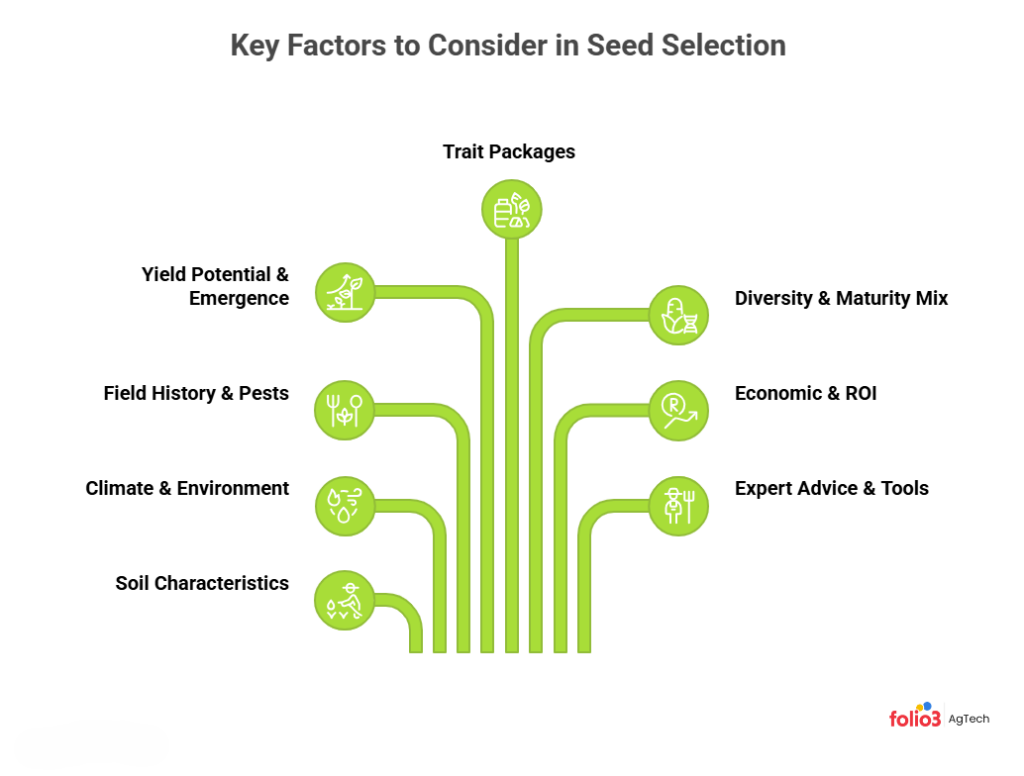
Soil Characteristics
Soil is the foundation of seed success. Evaluate texture (sandy, loamy, clayey), drainage, organic matter, nutrient levels, and pH through soil testing. Healthy soils not only supply nutrients but also buffer moisture extremes; NRCS notes that farmers practising soil‑health management experience less variable yields and better water retention.
When you know your soil’s strengths and weaknesses, you can select hybrids or varieties that fit. For example, you can choose drought‑tolerant corn for light, sandy fields and high‑standability hybrids for heavy soils prone to lodging.
Climate & Environment
Climate determines which seed traits will be beneficial. Consider average temperature, rainfall, frost dates, and extreme weather patterns. NASA reported that the U.S. corn yield reached a record 179.3 bushels per acre in 2024, while soybeans averaged 50.7 bushels per acre; these national benchmarks illustrate what’s possible under favorable conditions.
However, drought and heat stress can reduce yields; Kansas State University trials found that drought‑tolerant corn hybrids out‑yielded conventional hybrids by around 6 bushels per acre on average, with advantages ranging 5–15 bu/ac in water‑stressed environments. Align seed selection with expected moisture and temperature to reduce weather risk.
Field History & Pests
Crop rotation and pest history influence seed choice. Continuous corn or soybeans may accumulate disease inoculum or insect populations. If your fields have a history of soybean cyst nematode (SCN) or sudden death syndrome (SDS), select soybean varieties with specific resistance.
Research showed that biological seed treatments increased soybean yields by 2 bushels per acre at two locations but provided no overall benefit across eight trials. It indicates that seed treatments should target known pathogens rather than be used indiscriminately. So, evaluate local pest pressures and choose varieties with appropriate resistance or trait packages.
Yield Potential & Emergence
Yield potential is vital, but not all high‑yielding seeds are equal. Compare unbiased trial data from universities and third‑party tests rather than brand marketing. Also, remember that hybrids with similar maturity can differ by 50–70 bu/ac in yield. Early emergence and seedling vigor affect stand establishment, particularly in cool soils. Consider varieties bred for rapid emergence and cold tolerance if you plant early.
Trait Packages
Traits like herbicide tolerance, insect resistance, and drought tolerance can protect yield and reduce input costs. Pioneer’s Optimum® AQUAmax® drought‑tolerant corn hybrids delivered an average 5.1 bu/acre yield advantage over competitors across all environments in 2022. So, check trait packages for your pest pressures (e.g., Western corn rootworm, corn borer, SCN) and ensure they align with herbicide programs.
Diversity & Maturity Mix
Risk management calls for genetic diversity. Agronomists recommend planting 25 % early‑season, 50 % medium‑season, and 25 % full‑season hybrids to spread harvest timing and reduce exposure to weather risks. This maturity mix ensures that a late frost or heat wave doesn’t impact all acres equally. Diversity also applies to trait packages—mixing offensive, high‑yielding hybrids with defensive, stable performers helps balance risk and reward.
Economic & ROI
Seed is one of your largest annual investments. Evaluate cost relative to expected returns and input savings. Deep soil testing costing about $1 per acre delivered a return of 1 964 % to 8 157 % by enabling farmers to reduce nitrogen applications. Similarly, a study found that placing different hybrids in offensive and defensive zones increased yields up to 11.3 bushels per acre and added $47.84 per acre in revenue. Compare seed price, expected yield advantage, and cost savings from trait packages or seed treatments to determine ROI.
Expert Advice & Tools
Don’t go it alone. Agronomists, seed dealers and digital tools can help refine your decisions. The USDA reports that 52 % of midsize farms and 70 % of large farms used autosteer guidance systems in 2023, and 68 % of large farms used yield monitors, yield maps and soil maps. Adoption of precision agriculture is driven by the desire to increase yields, save labor, reduce inputs and improve soil. Use yield maps, soil sensors, decision‑support software and multi‑hybrid planters to place the right seed on the right acre. Combine expert recommendations with your farm’s data for the best outcome.
Crop‑Specific Considerations in Seed Selection
Different crops require tailored seed decisions. Here’s what to consider for major U.S. crops.
Corn
Corn is the most widely planted U.S. crop, with the 2024 national average yield at 179.3 bu/ac. When selecting corn hybrids, focus on stress tolerance (drought and heat), standability and maturity. Drought‑tolerant hybrids like Optimum AQUAmax® offer 5.1 bu/ac yield advantages. Consider standability traits (strong stalks and roots) to reduce lodging, especially in high winds. Match relative maturity (RM) to your region’s growing degree days and spread risk by planting early, mid and full‑season hybrids. Choose hybrids with disease resistance (e.g., against northern corn leaf blight or Goss’s wilt) based on your region’s history.
Soybeans
Soybeans averaged 50.7 bu/ac nationally in 2024. Soybean seed selection should start with disease and nematode resistance—especially against soybean cyst nematode, sudden death syndrome (SDS), and phytophthora root rot. Seed treatments can help like the Heads Up® biological seed treatment, which increased yields by 2 bushels per acre at two locations. Other treatments like ILeVO® out‑yielded Saltro® by 2.6 bu/ac at one location, but were similar elsewhere.
These results show that seed treatments provide insurance in fields with known disease pressure but are not guaranteed profit boosters. Also consider herbicide traits (e.g., Enlist E3®, XtendFlex®) and maturity group for your region. Early planting can provide a 1.5 bu/ac average yield increase across 25 Michigan sites, but may increase frost risk. So ensure you have early‑emerging, cold‑tolerant varieties and proper seed treatments.
Wheat & Other Cereals
Winter vs. spring cereal types differ widely in yield potential, quality and planting windows. Winter wheat yields are typically higher than spring wheat but require vernalization and timely fall planting. National wheat yields averaged around 50–55 bu/ac in recent years. When selecting wheat seed, consider disease packages (e.g., resistance to fusarium head blight, stripe rust), protein quality, and straw strength. Barley and oats demand different disease resistance; for example, barley varieties may need scab or net blotch resistance. In all cereals, choose varieties adapted to local conditions and test them in small plots before wide adoption.
Specialty Crops
Specialty crops like alfalfa, cotton, and niche seed markets require unique traits. Cotton’s 2024 U.S. yield averaged 836 pounds per acre. Seed selection for cotton should balance boll size, fibre quality, maturity, and insect resistance (e.g., Bt traits). For alfalfa, focus on winterhardiness, fall dormancy rating, disease resistance (e.g., against anthracnose and phytophthora), and forage quality. Niche seeds (e.g., cover crop species, vegetable seeds) demand attention to purity, germination rate, and market demand. Always source high‑quality certified seed to ensure viability and traceability.
A Step‑by‑Step Practical Framework for Seed Selection
The following ten‑step cycle unifies the agronomic and economic considerations discussed above into a practical seed selection process. Each step guides you from strategic planning to execution and evaluation.

Step 1: Define Goals and Constraints
Begin with clear objectives: Are you aiming for maximum yield, improved soil health, reduced input costs, or risk mitigation? List your constraints as budget, available labor, equipment capabilities, environmental regulations, and market requirements. For example, if you’re transitioning to regenerative practices, your goal might be to select cover crop blends that improve soil organic matter while still generating income. Establishing goals ensures that subsequent decisions align with your business priorities.
Step 2: Harvest & Collect Data
Use your recent harvest data, yield maps, and field notes to evaluate hybrid performance, pest issues, and management challenges. Record weather patterns, emergence success, and stand counts. Soil tests (standard 0–6 inch and deep 6–24 inch samples) reveal nutrient availability, as deep soil testing can save tens of thousands of dollars in nitrogen costs. Collecting accurate data gives you a baseline to compare seed options and adjust fertility programs.
Step 3: Map Productivity Zones & Soils
Use precision ag tools to map your fields into productivity zones based on soil type, slope, drainage, and historical yields. Many digital platforms integrate yield monitor data and satellite imagery to delineate management zones. Recognizing variable zones helps you assign the right hybrid to each area—high‑yielding offensive hybrids on productive acres and defensive hybrids on marginal soils.
Step 4: Prioritize Per‑Zone Objectives
For each zone, determine what matters most: yield maximization, stability, standability, disease resistance, or early harvest. In high‑yield zones, prioritize offensive hybrids with high yield ceilings. In low‑yield or drought‑prone zones, choose defensive hybrids with stress tolerance. Set realistic yield targets based on your data and soil tests to avoid over‑fertilization.
Step 5: Screen Seed Options by Genetics & Traits
Research hybrids and varieties that match your zone objectives. Consult university performance trials, independent seed guides, and local test plot results. Evaluate genetic potential for yield, disease resistance, insect protection, drought tolerance, and herbicide traits. Consider seed treatments where disease or insect pressure is high; remember that biological treatments may add only modest yield benefits. Use digital platforms and seed selector tools from suppliers to compare traits and performance across maturities.
Step 6: Evaluate Fit & Diversify Portfolio
Narrow your list to two or three seed choices per zone. Assess how each fits your soil type, planting date, expected rainfall, and pest threats. Diversify by selecting a mix of maturities and genetic backgrounds, as it reduces risk from weather extremes and spreads harvest workload. For soybeans, diversify maturity groups and herbicide tolerance traits to manage weed resistance and harvest timing.
Step 7: Run ROI & Plan Economic Strategy
Calculate the expected return on investment for each seed choice. Combine seed cost, estimated yield advantage, and potential input savings. Use budgeting tools or spreadsheets to compare scenarios—e.g., high‑yielding premium seed with high seed cost versus a lower‑cost hybrid with moderate yield. Premium hybrids may justify higher investment if they provide consistent performance across years, and don’t forget cost savings from reduced fertilizer. This step helps you align seed expenditures with cash‑flow projections and profitability goals.
Step 8: Set Up Test Plots & Consult Advisors
Before planting large acreage with a new hybrid or variety, test it on small plots in representative zones. Use replicated strip trials to compare performance under your management conditions. Engage agronomists, seed company representatives and extension specialists to evaluate results and provide recommendations. Consider working with technology providers to implement multi‑hybrid planting or variable‑rate seeding; adopting such tools has yielded significant gains.
Step 9: Finalize Planting & Treatment Plan
Once you’ve chosen your seeds, create a comprehensive planting plan. Specify planting dates, seeding rates, row widths, depth settings and seed treatments for each zone. Use variable‑rate prescriptions where appropriate. Plan for seed storage and handling to maintain germination and vigor. Coordinate with your chemical and fertilizer plans to ensure compatibility of herbicide traits and nutrient timing.
Step 10: Monitor, Evaluate & Adjust
During the growing season, monitor emergence, stand counts and plant health. Use in‑season imagery, scouting and sensor data to evaluate hybrid performance and identify issues early. Post‑harvest, analyze yield maps and compare results to your expectations. Did the offensive hybrid deliver on high‑yield zones? Did defensive hybrids hold up under stress? Adjust your seed selection strategy based on these observations. Seed selection is a continuous improvement process; each season’s data informs next year’s decisions.
Make Smarter Seed Selection with Seed Management Software
Selecting and managing seed is complex, especially when you farm at scale. Folio3 AgTech offers a comprehensive seed management software solution designed to help you streamline every step of the seed cycle, from production to distribution. Here are the feature benefits you gain by deploying such a digital system in your farm operations:
- Industry‑tailored design. Unlike generic inventory systems, Folio3’s platform is built specifically for the seed industry to address challenges like maintaining genetic purity and regulatory compliance.
- Centralized data and process management. The software consolidates seed data—inventory levels, germination rates, test results, and breeding records into a single dashboard. This centralization improves efficiency, accuracy, and transparency.
- Real‑time analytics and reporting. With customizable reports and real‑time insights, you can make informed decisions on planting rates, seed allocation, and quality assurance.
- Traceability and inventory control. Advanced search and barcode integration enable you to monitor seed locations and attributes throughout the lifecycle, ensuring traceability and compliance.
- Seed processing workflows. Folio3 provides tools for cleaning, sorting, grading, treating, and packaging seed. You can automate tasks, track processing history, and maintain detailed records for certification.
Wrapping it Up
Digital tools aren’t just “nice to have”; they’re becoming standard practice. Investing in a dedicated seed management platform helps you stay competitive, reduces errors, and saves time. By integrating Folio3’s software into your operations, you can ensure accurate seed tracking, optimize inventory turnover, and gain the data necessary to make smarter seed choices.As you plan your next season, embrace the power of digital seed selection to stay ahead in a competitive and ever‑changing agricultural landscape. To explore how Folio3 can transform your seed operations, connect with our experts or book a demo today.
FAQs
How Do I Balance Yield Potential vs. Stability When Choosing Seed?
Balancing yield potential with stability means selecting seeds that offer high yields but are resilient in your specific conditions. High-yielding seeds excel in favorable environments but may struggle in poor conditions. Stable varieties provide consistent performance under varying conditions, though often at lower yields. Choose a mix based on your field’s risks: prioritize stability in areas prone to adverse weather, and select higher-yielding seeds for ideal zones.
What’s the Best Way to Use My Yield Maps in Seed Selection?
Yield maps help tailor seed selection by identifying high and low-performing areas in your field. Use these maps to match seed types with specific zones: plant high-performance seeds in areas with consistently good yields and switch to more stable varieties for underperforming zones. This ensures the best use of your farm’s diverse productivity.
How Many Maturities Should I Plant to Hedge Weather Risk?
Planting a mix of early, mid, and late maturity seeds (e.g., 25% early, 50% mid, 25% late) helps hedge against weather risks. Early maturing crops avoid late-season frost, while late maturing crops maximize the growing season. This balance ensures you can manage both early and late-season weather challenges.
Do Seed Treatments Always Pay Off?
Seed treatments are beneficial when diseases or pests are prevalent, improving germination and plant health. They may not always pay off in low-risk areas where pests and diseases are minimal. Evaluate the local conditions and pest pressures to decide if the cost of seed treatments justifies the benefit.
What Data Should I Track Post-Harvest to Improve Next Year’s Seed Plan?
Track yield data, disease and pest occurrences, and harvest conditions (weather, moisture levels). Analyze how each seed performed in different zones and correlate it with soil conditions and amendments. This data helps refine seed selection for next season, ensuring better choices based on actual performance.


